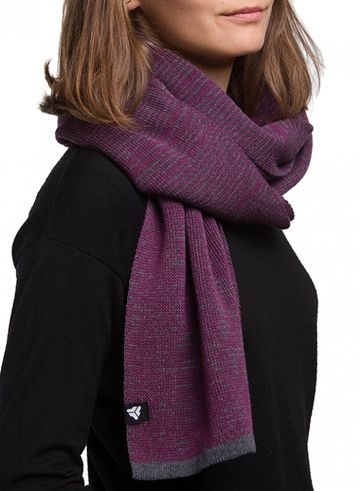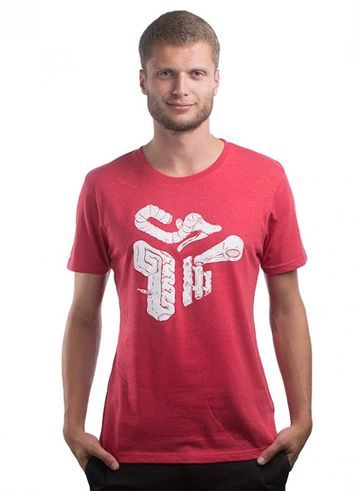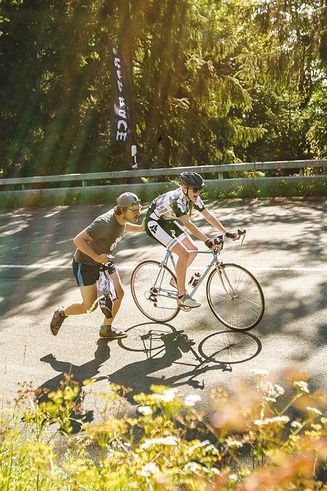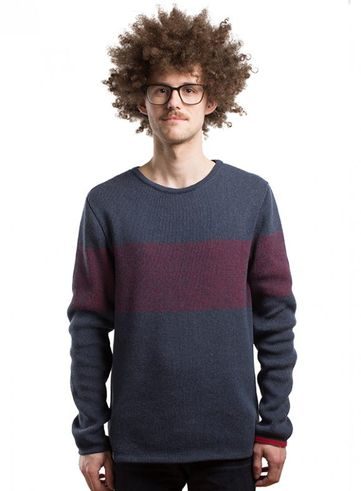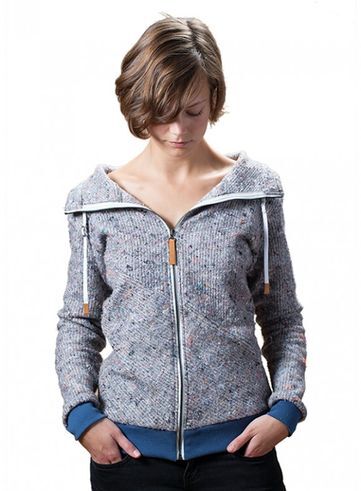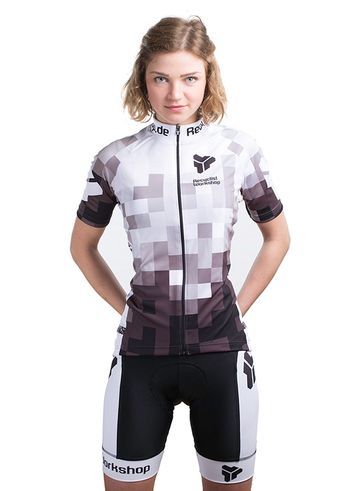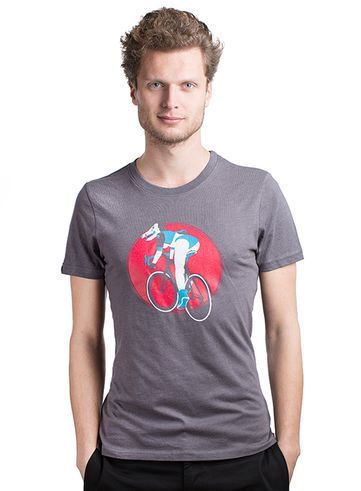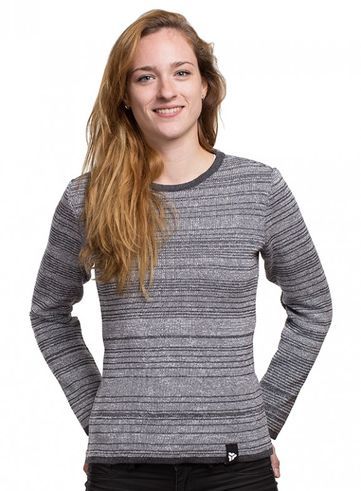Textile Upcycling
Two Big Wheels
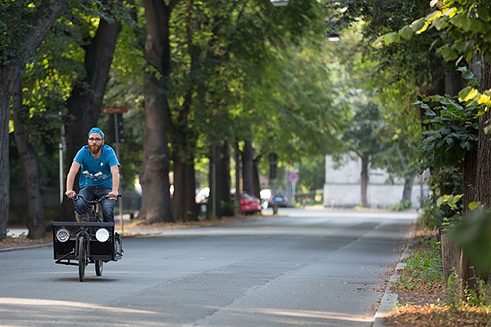
What do bicycles and recycling have in common? A start-up from Weimar knows the answer: under the label Recyclist Workshop, Lars Nüthen and Valentin Schmitt began producing everyday fashion and cycling apparel from 100 percent recycled material.
The two founders pursue their passion for cycling in their leisure time as well. To them, it combines joie de vivre and a responsible urban lifestyle. Their Weimar office is located in BAUHAUS.EINS, a Wilhelminian building in need of renovation that the city and the university are sustainably rehabilitating in an interdisciplinary project.
Lars Nüthen, what led to the launching of your business in 2012?
Lars: At the time we were still studying architecture at the Bauhaus University, and had always been ardent cyclists. So the idea arose in a students’ bicycle repair shop. We thought about all the things one might make from the material that was lying around there and was no longer usable for the original purpose. We first designed a shoe made of rubber tubes. We needed material for the inner lining and came upon old movers’ covers of recycled fleece. In this way we began to study various fabrics and materials and their reuse. We sewed our first fleece jumpers and to provide them with really nice details we took, for instance, links from old bicycle chains. Through intensive collaboration with students from other faculties we were able to draw on an extensive network of specialists from various trades right from the start.
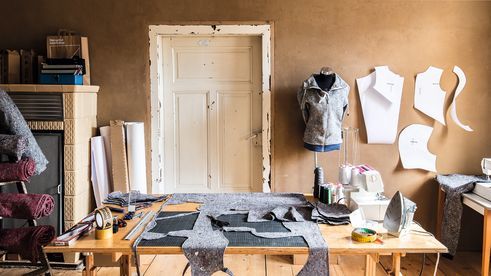 Recyclist Workshop
| © Recyclist Workshop
Recyclist Workshop
| © Recyclist Workshop
Why did you decide on one-hundred percent recycling?
The trend towards organic cotton is a positive step in the direction of sustainability, but the production of cotton fibre remains responsible for a gigantic consumption of water and energy. For us, this is the reason not to seek the future of the textile industry in conventional processing of ever-new resources, but instead to devote our work completely to processing recycled fibres. In this way, we avoid vast quantities of waste, save thousands of litres of water, and reduce CO2 emissions.
Your production concept is based on the cradle-to-cradle principle, and for this reason you were awarded the Bundespreis Ecodesign (German Federal Ecodesign Award) right at the outset. Please describe the cycle in which your products arise.
For our knitwear collection we process a yarn made 100 percent from recycled fibres. These fibres come from the huge amounts of waste ensuing from textile production. A perfectly balanced mix of 70 percent recycled cotton and 30 percent recycled plastic bottles enables us to dispense with virgin fibres. For our fleece collection, we use a material from coarsely de-fibred textile waste. Without complicated separation processes, production waste is directly re-integrated into fabric production. This method permits us to return each of our pieces of clothing at the end of its life to the recycling loop once again.
Why is your knitwear collection made in part from synthetic fibres?
Recycled cotton fibres are shorter than virgin ones. Plastic fibres give the fabric the necessary strength and stability. In our view, this fabric is of impeccable quality and is wonderfully wearable. But many ecologically aware consumers do not want any plastic at all in their clothing. For this reason we are compelled to shift from our original philosophy and are currently working on a one-hundred-percent cotton fabric that is largely made from used and to a lesser extent from virgin, more stable organic cotton fibres.
What part does the location play where your products are made?
Wherever possible, we collaborate with regional businesses. In this way, highest labour and environmental standards can be upheld and CO2 emissions are reduced through shorter transportation routes. Our jumpers and caps are therefore knitted in Thuringia and the fleece is made by a firm in Bautzen. We currently have our sewing done in an integrative garment factory in Berlin and in a jersey factory by Nuremberg. But sometimes we cannot realise a work step locally. For instance, in Germany there are only a very few yarn-makers, and among them none that can manufacture recycling yarn, so we therefore purchase it from a Spanish firm. These days, textile suppliers who are geographically as close as possible to our German company location are for the most part in southern Europe or Turkey. As for our Weimar location: our project would certainly never have taken off so smoothly without the university network and the interdisciplinary potentials present in this manageably-sized city. We always find quick assistance for most of our problems here.
Can one speak of an upcycling trend in Germany?
Environmental awareness and sustainability are always important issues. Consumer patterns are changing, but not yet to a corresponding extent. In view of the comparatively high prices for upcycling products, purchasing power, but also a willingness to pay more for sustainability plays a major part here. Industry won’t adapt until it sees prospects for economic added value. By now, the potentials for textile production have been recognised in part, and the number of manufacturers with recycled fibres on offer is gradually increasing. Unfortunately, the range of yarns and fabrics is by no means as varied as when conventional raw materials are used, so we are still limited in designing new collections. But with increasingly dwindling resources, the economic relevance of re- and upcycling will be more and more important in the future.
